
Director Danae Grandison on pitching, community, and finding her place in film.
Interviews • 4min read
Interviews • Written by Genero
Based in Montana, USA, director Jennings Barmore made an impressive debut on Genero a few years back and has gone on to shoot a number of music videos and projects since then. His latest work? This intergalactic piece for musician Roy Cohen.
Barmore has always surprised us with his ability to turn low budget, local shoots into other-worldly features, and his music video for ‘Take Off’ is no different.
Jennings and his team made an unbelievable job with the music video for Take Off. So professional, musically edited and looks astonishing. I just can’t find the words to describe how satisfied I am with this music video.
We caught up with the filmmaker from Slingshot Media House to find out more about his approach to the craft, and what went into bringing this idea to life.
My interest in making movies started as a kid running around the hills of Montana with a Sony Handycam, homemade props, and fireworks if needed. During high school, I really got into rock and ice climbing, and naturally, I always brought a camera along. I became fascinated with the landscape and experiencing the extremes of the natural world through film. I went on to get my bachelors degree from Montana State University’s film department. After graduating I started a small production company and worked on any project I could get involved with. I got to go on a lot of unique adventures in that season, hanging out of bush planes with a camera in one hand and a barf bag in the other, trying to keep up with ultra runners on a 100 mile race through the Olympic mountains of Washington, and traveling around the world twice doing a documentary on human trafficking.
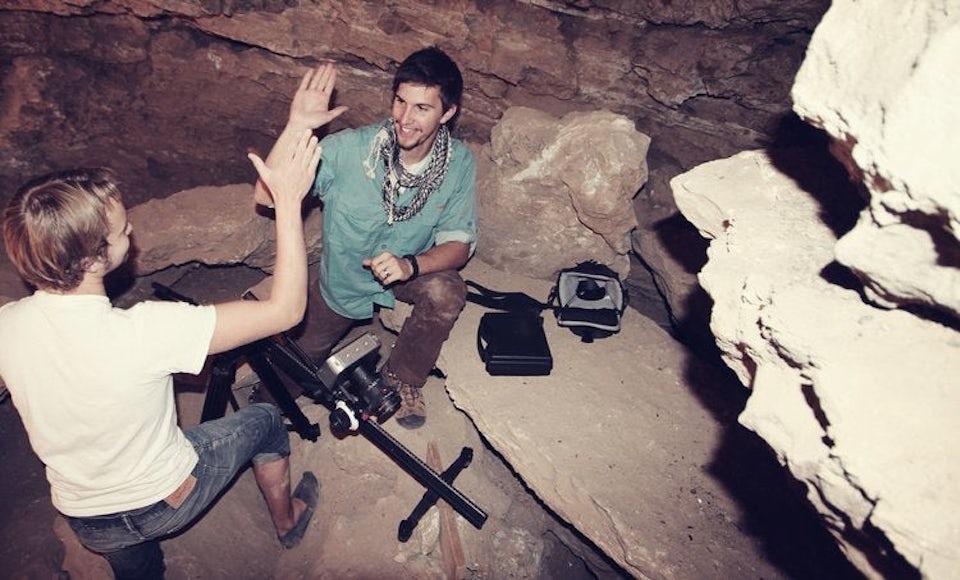
It was a fun season of life but my passion is for writing and directing narrative films and I have been fortunate enough to purse that more and more. I have a lot of friends who went into the industry in LA and New York, but I really wanted to stay in Montana, raise a family, and continue telling stories here on my own terms. I have really been blessed to be a part of a solid and growing filmmaking community here in the west.
The connectivity of modern technology has made it more common for filmmaking to be less locked to a specific place, making it possible to create and collaborate just about anywhere, and I think that is really exciting. Genero is a great example of doing that, connecting people from around the world in doing what they love to do. It’s a cool time where if you have a vision and your willing to work really hard you can blaze your own trail in this amazing, silly, hard, awesome industry called movie making.

Pitching for projects is hard work, at least it is for me. It’s a lot of heavy lifting and pretty serious decision making to bring something from an idea in your head to a clearly understandable treatment. For music videos I usually start by listening to the song and seeing where my imagination takes me. Sometimes the client will have specific direction to follow, sometimes it will be wide open. In either case I think it’s critical that I’m excited about what I’m pitching. I think if you look for shortcuts or try and make something that is “good enough” that will really show in your pitch and on screen, so I try to only pitch for projects that I have a real vision for and would be passionate about creating.
For ‘Take Off’ I was honestly really inspired by the name. I knew pretty much right away that I wanted it to have some kind of rocket ship and have a kind of day dreamy style. As we began to weed through ideas I really latched onto the concept of the song being a kind of outrageous Rocky training sequence that we would set in an otherwise serious setting and situation. I wanted the character to feel really isolated and stranded, and what could be more isolated then being stuck in space? Last year we shot a small film set on Mars in a location only a few hours from my house, so I knew I could get the look I wanted within the budget. From there it all kind of came together.

Outside of scheduling and shortlisting, probably the most time-consuming part of pre-production was the production design. Loosely we already had most of the space suite built from a previous film so we were just updating the look of it to fit the overall style we wanted for Take Off. The next big project was the space ship itself. I always try and find a way to do effective work practically rather than relying on CG. There is something about having a physical object to work with—there is just something magical about bringing something like that to life that I get a ton of joy from. So we ended up using a scale model kit for the exterior of the Space Ship which stood about 2 feet tall. It was a pretty detailed and time-intensive process, with lots of super glue and tiny plastic pieces. For the interior of the ship, we decided to use a horse trailer, of all things. With some deep cleaning, a bit of set dressing and some creative lighting solutions we were able to get a pretty cool result.
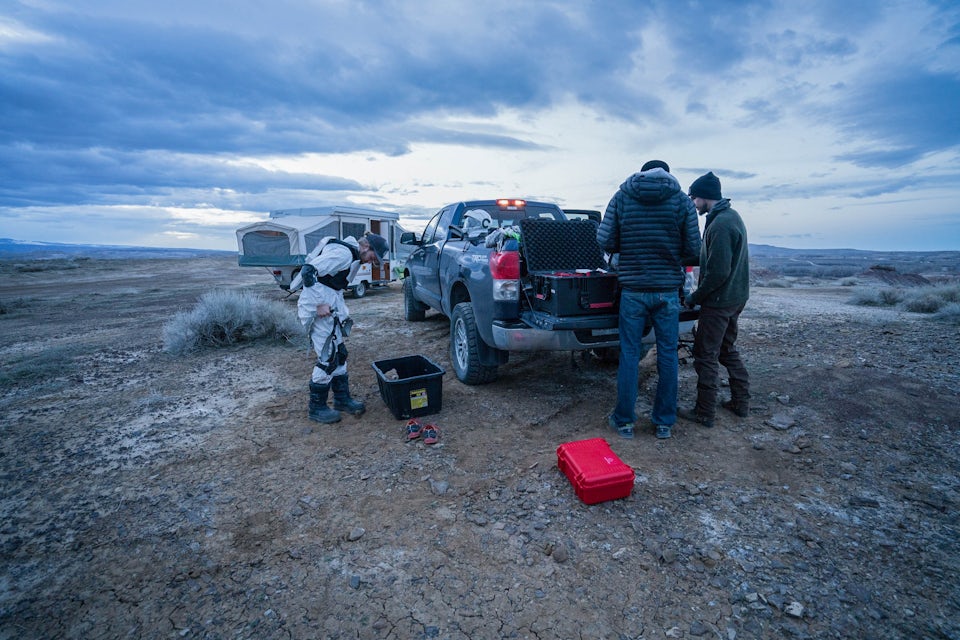
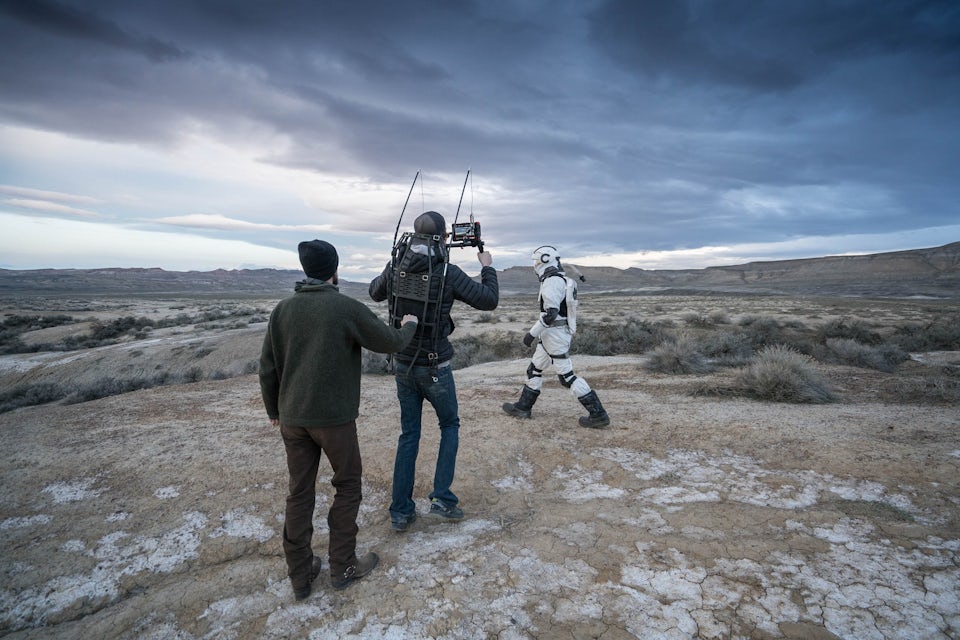
Our first day was shooting the interior scenes. We lit the set with a rewired LED truck light bar punching through the two trailer windows. Michael, the DP, had a bunch of magnetic led fixtures that we used inside the trailer to both light the actor and give more of a space ship look. We then filled the space with fog, shook the trailer like madmen and rolled camera.
That night we pilled into a truck and drove 4 hours down to our Mars location. By the time we had the camper set up and were ready for bed it was around 3 AM. After about two hours of sleep, we started getting everything ready for a new day of shooting.
Our camera setup for this project played a big part in giving us the retro sci-fi look we wanted. We used the Panasonic GH4 with SLR Magic anamorphic lenses which gave the image a great texture and helped sell the world we were trying to create, allowing us to hide some imperfections in our sets with lens flares and distortion. We then recorded to an Atomos Inferno giving us 10bit 4K output and desqueezing the image for monitoring. All around it was a great little system.
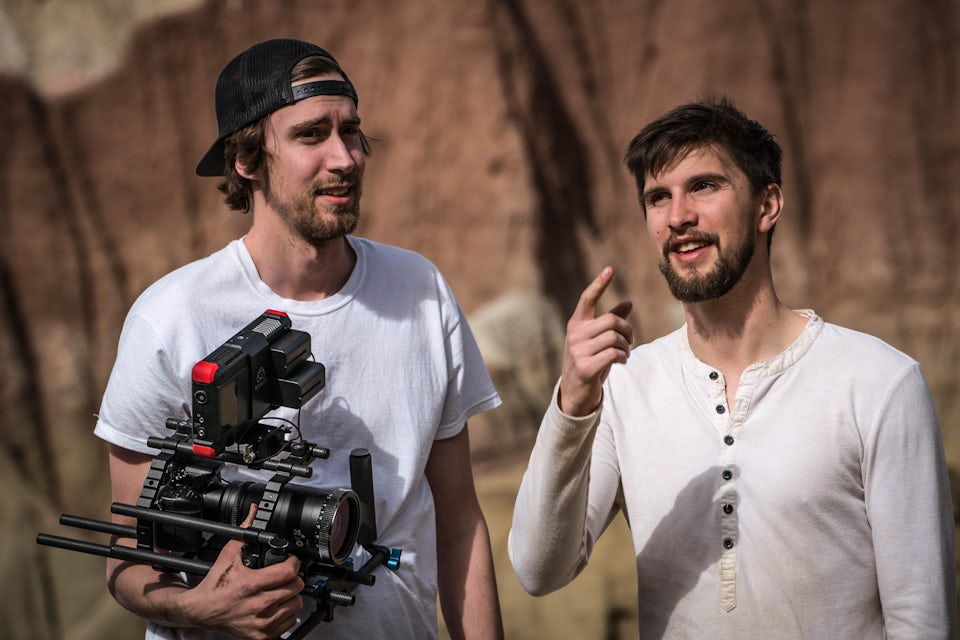
We shot fiercely all day long, having to take a noontime nap due to high winds. We shot right up until sunset and drove back home, it was an epic day. This is when you really want a great crew. Everyone was tireless in their enthusiasm and hard work, even while sand was being blown into their eyes at 20 mph. Big shout out to our actor Aaron Flood, we had him running, climbing, and dancing around in that space suit all day and he didn’t let it get in the way of his performance. And also our set photographer, grip, and camera assistant Adam Danielson who jumped right into each new setup with undaunted energy. Finally, our amazing DP Michael Jezak brought the cool-headed, creative problem solving and relentlessness to tell this story visually.
The most complex part of the post for this project was going to be the visual effects. Once we had a locked cut we started breaking down each shot that would need a VFX element added. For all the shots of the ship, we used our scale model which we shot against a green screen. We then tracked the shot in After Effects and Moca and composited the ship into the scene, adding dust and smoke virtually. I’m really happy with the way it turned out looking, I think it fits the story we were telling. Color correction was a big part of post too. Michael spent a lot of time in Devinci trying to give it a Martian feel while still retaining some of the colors we liked for the shoot.
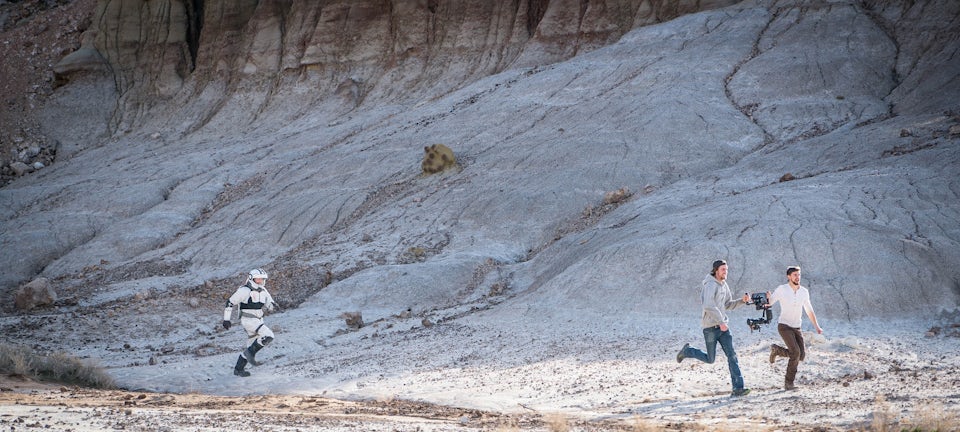
Well, that’s a pretty awesome compliment! In this project, we spent a lot of time really breaking down the things we liked about movies like Interstellar or The Martian. Even on those big movies, they are finding ways to trick the audience, they just have heaps more recourses and crew to pull it off. So we tried to approach it with the end image in mind and then work backwards from there, simplifying and cheating wherever we had to to get as close to our end goal as possible.
There is also an element of stripping your lofty dreams down and simplifying so that you can get all of the coverage you need to make the story work as a whole. I have made the mistake on several projects where I get so caught up on trying to get one super technical shot perfect that we end up having to short change ourselves on other aspects of the film. Michael, our DP, is really pragmatic and often finds simpler ways to communicate the same idea visually. So having a good team that balances out each persons’ extremes is a must, especially when working with tight budgets and tighter deadlines. Work with people you trust creatively.

Landscape and setting is a huge inspiration to me. Some of my earliest memories have to do with being in beautiful, wild places. I think it’s important to try and learn from the beauty that is around you, to observe and be awed. Landscape is a character in my life, so it’s natural for it to be a character in my work. I like bringing people to places they have never been.
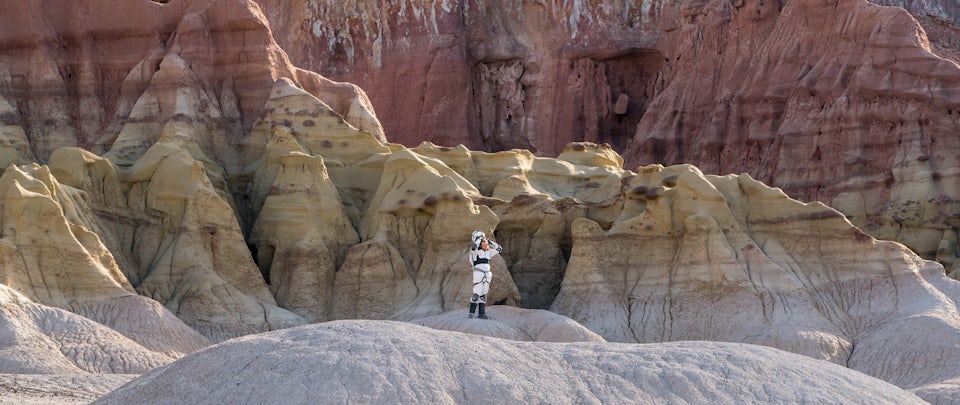
I would say the most important thing when shooting remotely is a solid team. There are really talented artists who work really well under most circumstances but who don’t love roughing it in the wilderness. My core team really have backcountry living dialled. Because it’s more than just being able to get to a place, it’s about being safe and smart and being able to trust one another. And it’s about having a good attitude, even if you are hauling hundreds of pounds of gear up a snowy mountain. The people I like to make movies with are also the people I like to adventure with. Also, radios, always have radios. It’s no good yelling across a canyon trying to give your actor direction. Get some good radios, it will save you time and frustration.
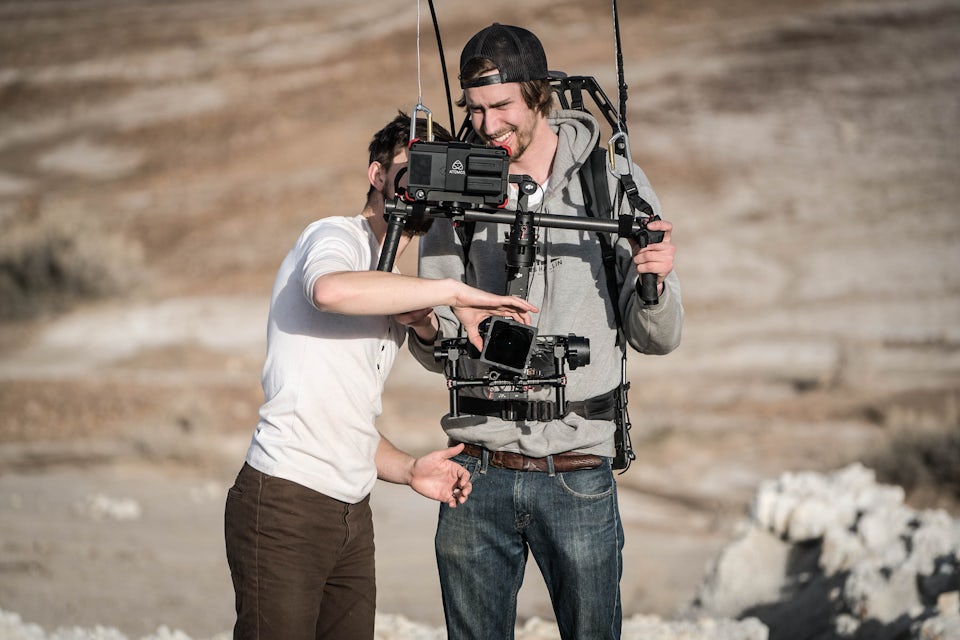

Another huge part of shooting remotely is understanding how the light and weather systems work. No matter how much you plan you are still at the mercy of the weather. So I always try and have plan A, B, C, and D. That way I can know I’m getting what we need while having flexibility built into our day. Shooting on remote locations requires compromise, so plan out your compromises so that when stuff goes sideways you can keep the right attitude and momentum to finish the project.
For gear, the biggest thing I have learned is to simplify, simplify, simplify. We live in a time when we have access to all of this super cool tech to make our shots look amazing. However, it’s easy for those things to get in the way of the story your telling, especially if you’ve only got 10 minutes to get the next shot. If you’re up on location and stressed out because your actor is tired, you’re just about to lose your light and you still need to get three more setups, you don’t want to have to be worrying about balancing your gimbal too. I’ve had to learn that the hard way.
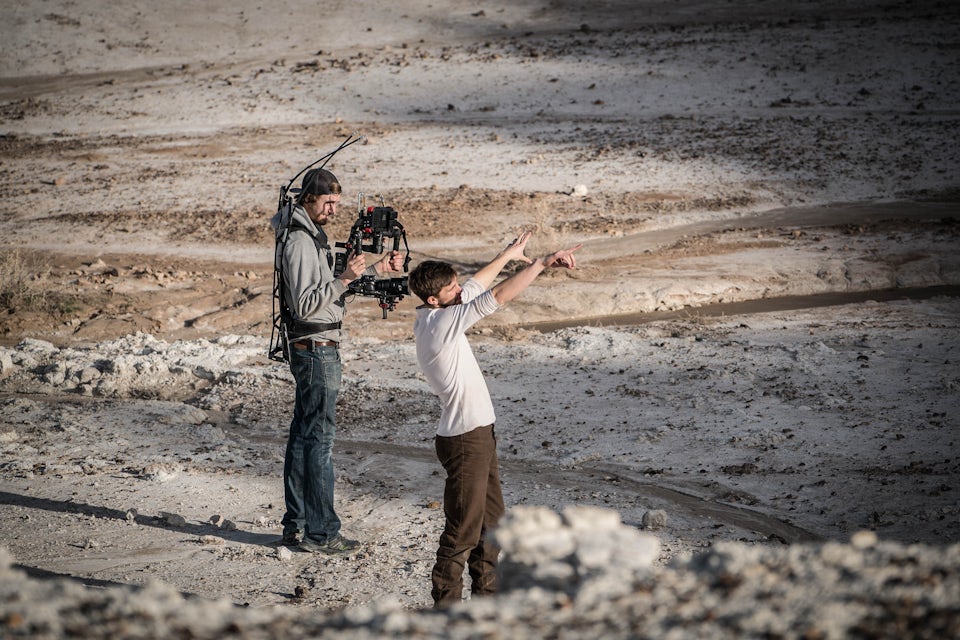
Take Off was a really fun and rewarding project. We got to build a space ship, go camping in the desert, and make something that we are all really proud of. It was a blast working with Roy Cohen, he was really supportive and stoked through the whole process. Projects like this just make me excited for whats coming next.
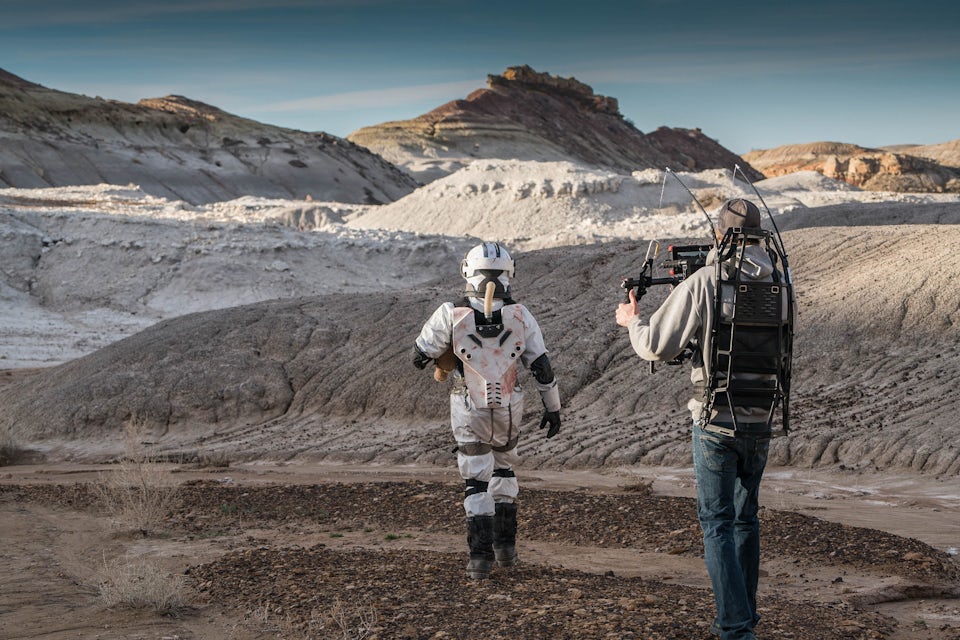
A big thanks to Jennings for chatting to us! Got a story to tell about your filmmaking project? Email us at info@genero.com to get featured!

Interviews • 4min read
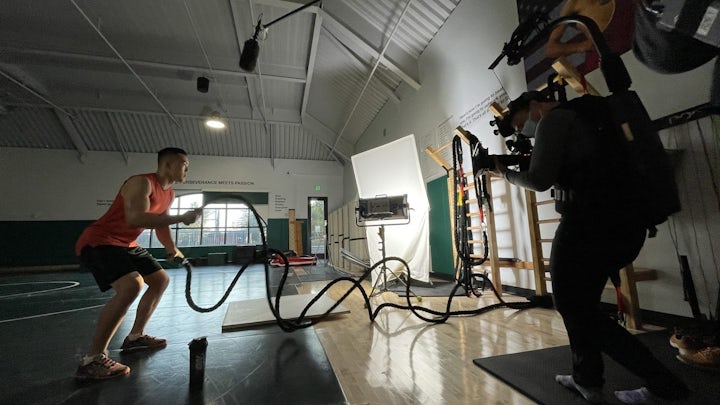
Interviews • 4min read